
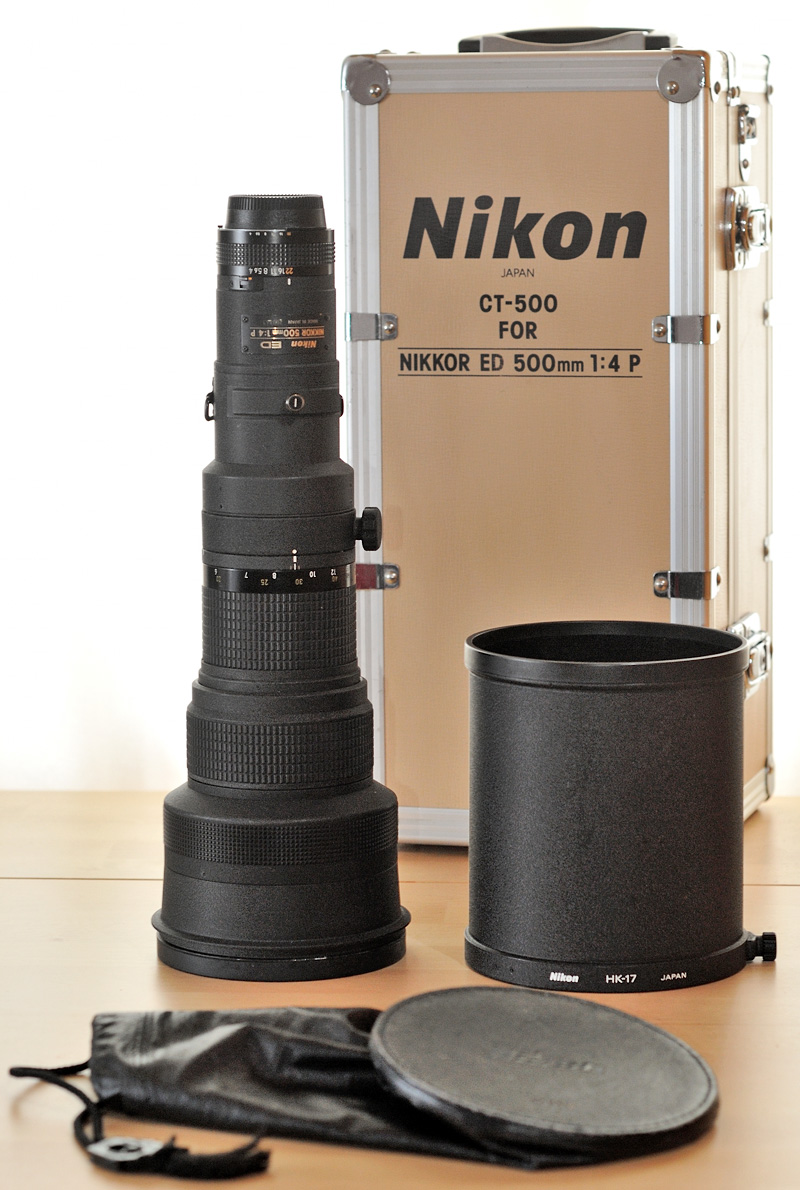
|
|
The lens itself weighs around 3kg. It comes in an impressive case that also offers enough space for additional accessories such as teleconverters. In the foreground you can see the front cap and on the right the HK-17 hood. As usual, the hood can be mounted reversed for transport. The cap also fits onto the hood. Needless to say: the quality of workmanship and the feel of the lens meets the highest standards. |
The Nikkor 500mm f/4 P was built from 1988 to 2005. That is a long time! So is this lens a Nikkor legend? First of all no, because when it was announced in autumn 1987, it was clear that Nikon could not deliver what they had announced before!
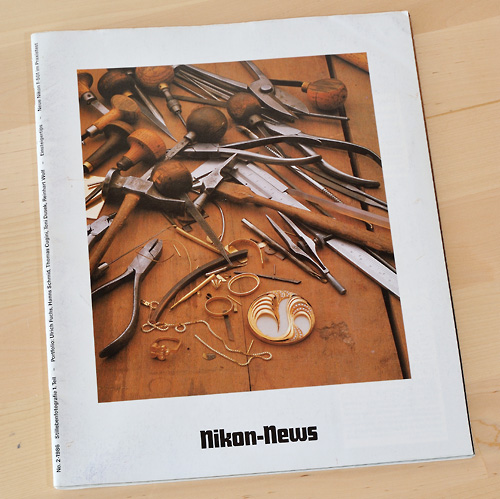
|
|
The Nikon News issue for the second quarter of 1986 contained a detailed report on the new Nikon F-501. |
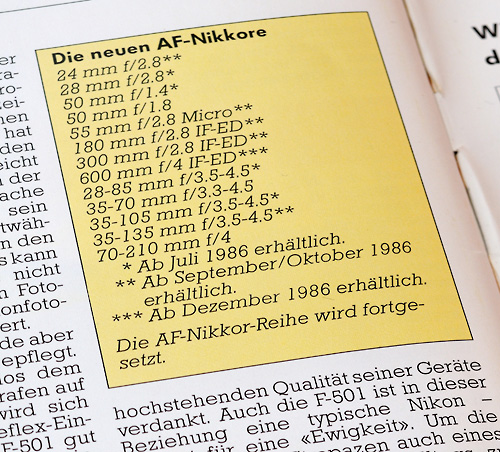
|
|
The report contained this AF-Nikkor roadmap for 1986. |
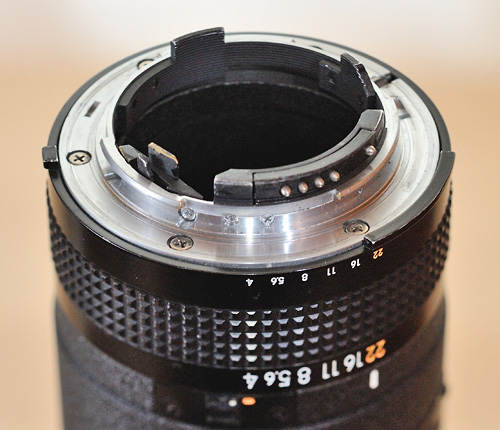
|
|
The 500mm f/4 P was the first Nikkor with an AI-P interface. |
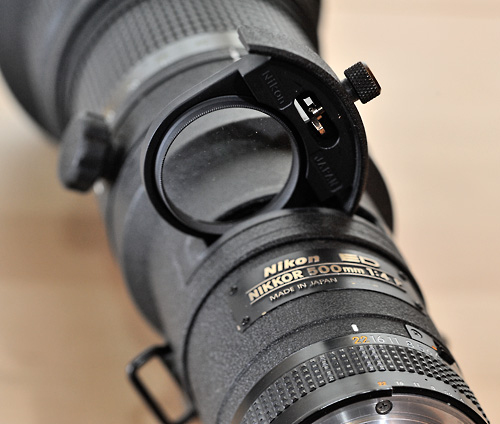
|
|
The lens has a slip-in holder for 39mm filters. |
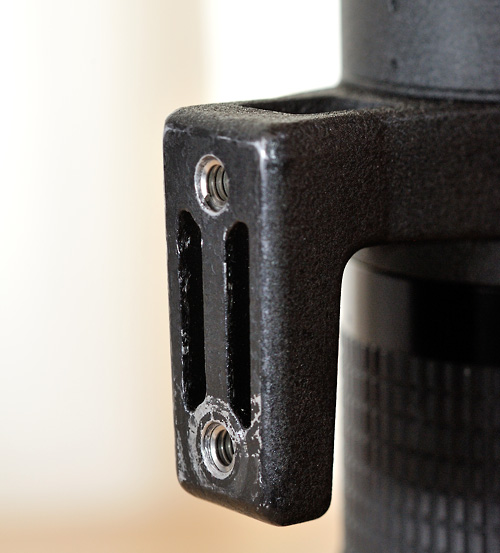
|
|
The tripod mount is a bit small, but nevertheless sturdy. |
The story began in 1985 when Minolta introduced the 7000, a mass-market SLR with built-in autofocus and interchangeable lenses. Minolta jettisoned the proven MD bayonet and presented a completely new mount (A-mount). The motor for focusing the lenses was inside the camera - the new bayonet had an integrated mechanical coupling for the AF connection between camera and lens.
Nikon had already launched a first AF-SLR in 1983: the F3AF. For this professional and expensive camera, Nikon supplied only two autofocus lenses and an AF teleconverter. In this solution, the autofocus motor was inside the lens.
One year after Minolta, Nikon introduced a mass market AF-SLR, the F-501, which retained the F-Mount, just like the F3AF. Technically, the F-501's approach was the same as Minolta's: AF drive inside the camera and a "screwdriver coupling" within the F-Mount. Although the F-501 was also able to focus the lenses of the F3AF, in that time I had the clear impression that the screwdriver AF was the future.
I was a subscriber to "Nikon News", a quarterly magazine published by Nikon Germany and Nikon Switzerland. In issue 2/86, a longer report about the F-501 was published, including an AF lens roadmap for 1986. All lenses mentioned in the roadmap were actually introduced, with one exception: the AF-Nikkor 600mm f/4 IF-ED announced for December 1986 never reached the market.
In 1987 Canon and Pentax also introduced AF-SLRs to the market. Pentax integrated - similar to Nikon - a screwdriver AF into the K-bayonet. But Canon went a completely different way: the AF motors were integrated into the lens and also the aperture was controlled by a motor inside the lens. The new EOF bayonet had no more mechanical couplings. Canon had the most modern and radical approach to AF introduction!
Half a year after Canon's EOS introduction Nikon announced the Nikkor 500mm f/4 P. This was a clear signal: The AF 600mm f/4 announced in 1986 would not be released! At that time Nikon was not able to offer a professional super telephoto lens with autofocus.
In autumn 1988 the semi-professional Nikon F-801 and the professional F4 were introduced in close succession. One difference between the two cameras only became clear years later: the F4 supports lenses with built-in focusing motor, the F-801 does not. I suppose, in the course of 1988 Nikon decided to keep the door to the Canon way open.
In November 1988, the Canon 600mm f/4 AF came onto the market. Nikon needed four years more! In autumn 1992 Nikon introduced the first two lenses with a built-in focusing motor: the AF-I 300mm f/2.8 and the AF-I 600mm f/4. During these years Nikon lost its leading position among professional photographers to Canon...
So much for the unfortunate circumstances surrounding the launch of the Nikkor 500mm f/4 P some 30 years ago. With 7500 units produced, the lens sold quite well. Seen in this light, the 500mm f/4 P can be considered a bit of a legend today. It is easy to find on the second-hand market - the price is typically a little bit over 1000 Euros on ebay.de. Thanks to the AI-P interface (see my article about that) the exposure control of a modern DSLR works fine in conjunction with this lens.
When I bought the lens a few years ago during the dark season, I immediately took some test shots inhouse. I pasted an offering leaflet of a supermarket onto the wall, focussed with my Df in live view mode and photographed the leaflet from a distance of about 7 meters with flash. I also took pictures with the TC-14B, TC-16A and TC-301, with the lens stopped down by one step in all shots. The result was clear: the lens is really sharp! Together with the TC-14B the performance is good, only the corners show blur. Forget the TC-16A! With this converter the edges are soft and you get more chromatic aberrations than the Df can correct itself! Surprisingly good was the performance together with the TC-301, the results were sharp all over! Thus, I was happy in the first place.
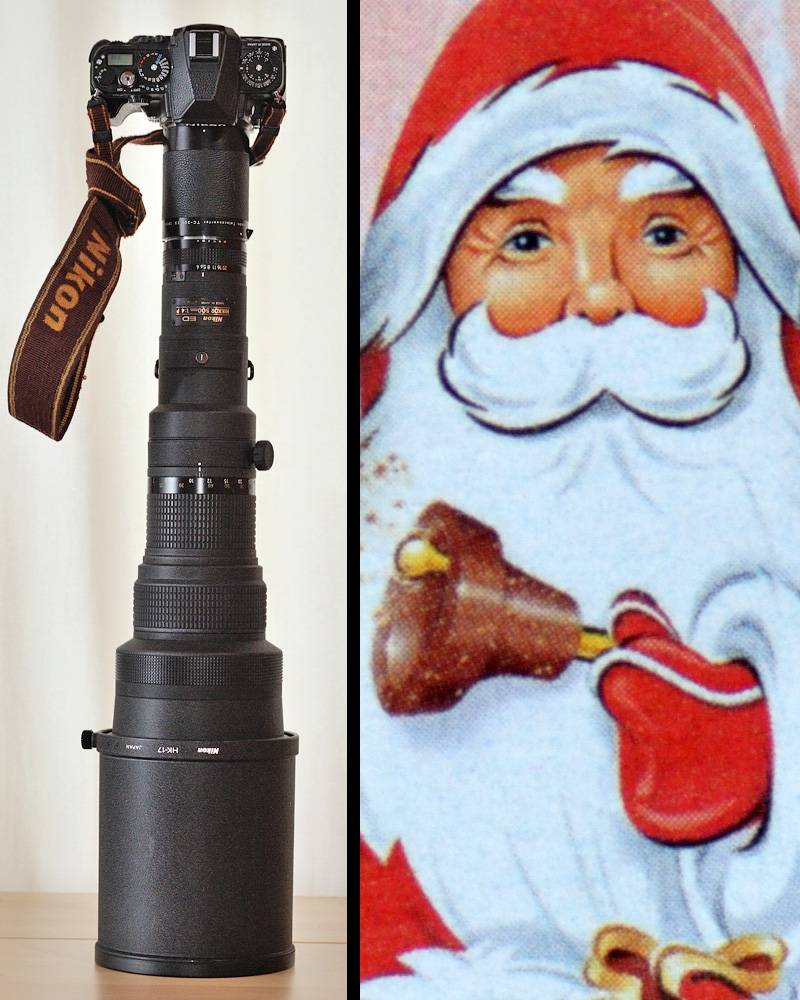
|
|
To the left: Nikon Df plus TC-301 plus Nikkor 500mm f/4 P with hood. Length: 690mm. Focal length: 1000mm. To the right: an image of "Nikolaus" (aka Santa Claus) from the supermarket's leaflet is as sharp as possible on such a printed material! The original size of this crop is 21 by 47mm. |
Unfortunately, things are a little bit more problematic in real life...
Firstly, I have a problem with focussing. Among my DSLRs, focussing works best with the Df, but it's not really good with it either. With my 300mm f/4 or also with the combination 300mm f/2.8 plus TC-17EII I can focus manually quite safely. With Live-View - best with field monitor - it works better, but still remains a bit problematic! Focussing with my F3 and an H4 focussing screen works even better - but that is of no use to me today. Of course, my eyes could be the reason for the problem. But I don't have any serious visual defects.
Secondly, the lens produces an unpleasant - because colourful - bokeh. Have a look:
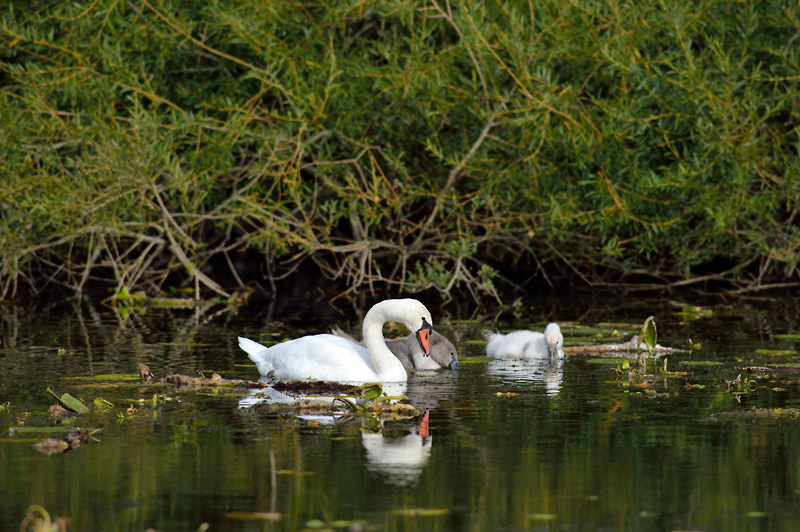
|
|
One of my real world test shots. Nikon Df plus 500mm f/4 P at F5.6, ISO1600 and 1/4000sec, post-processed with Nikon Capture NX2, which removed the bokeh fringing of the lens as good as possible. Below you will find three 100%-crops of this image. |
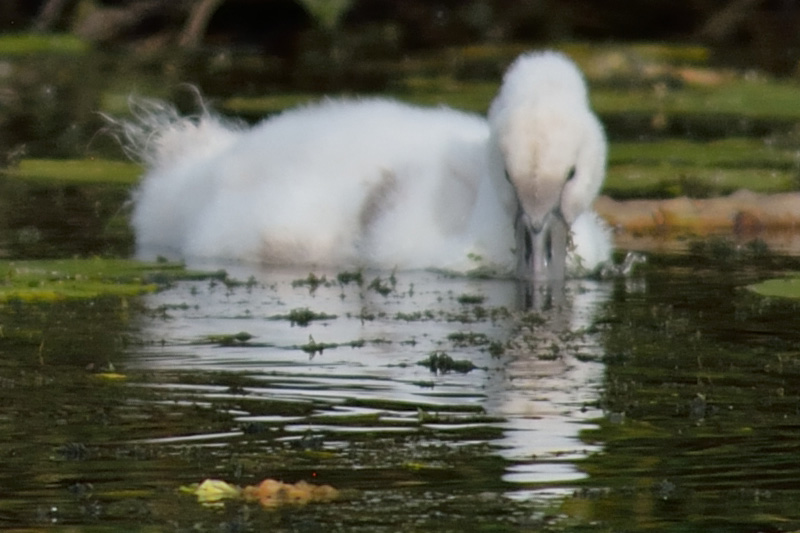
|
|
|
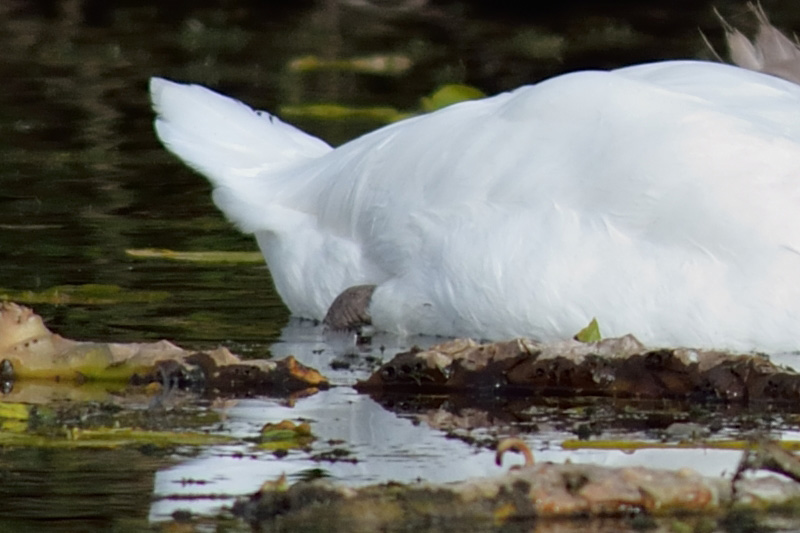
|
|
|
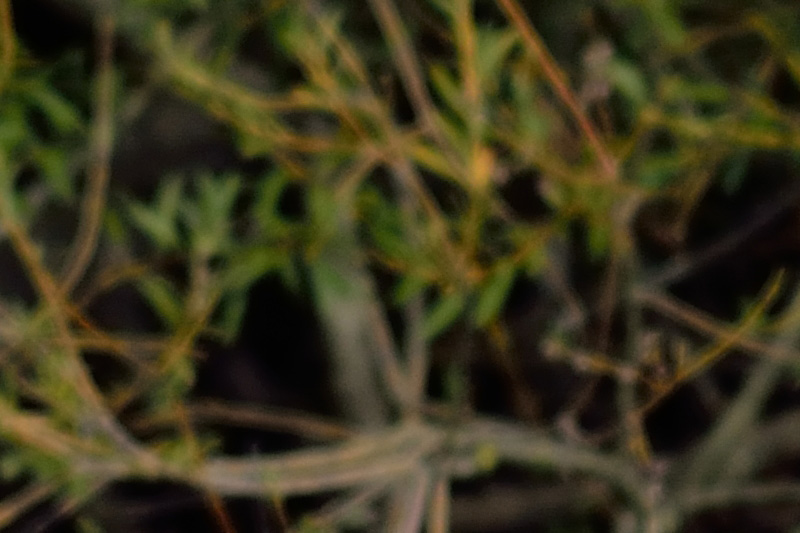
|
|
|
In combination with a teleconverter or a sensor with a higher resolution the artifacts are even more noticeable.
Is it a bad lens? No. Is it a great lens by today's standards? No. The combination of my AF-S Nikkor 300mm f/2.8 VRII with any current Nikon teleconverter has a better optical performance (and additionally AF and VR)!